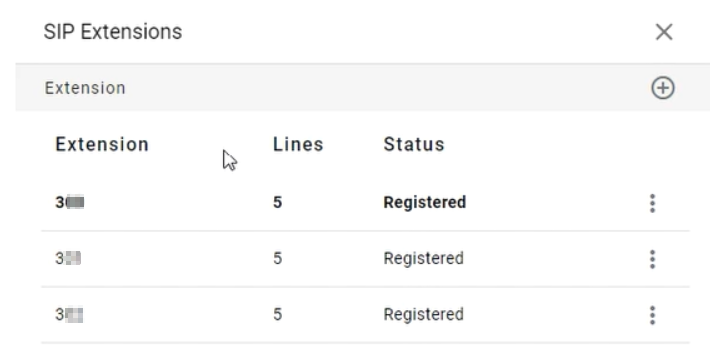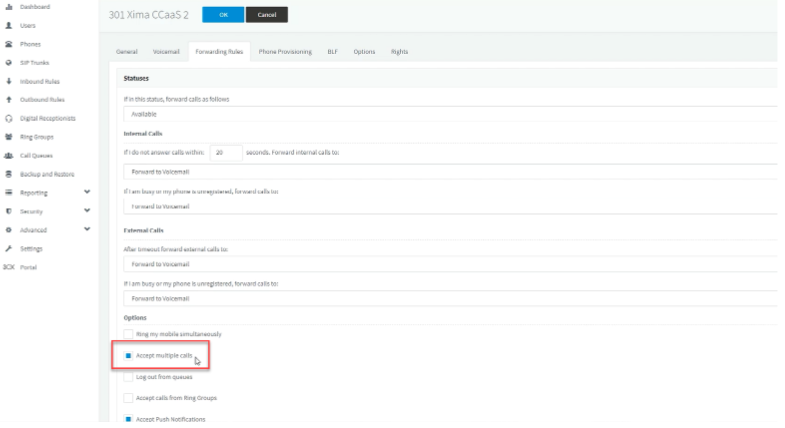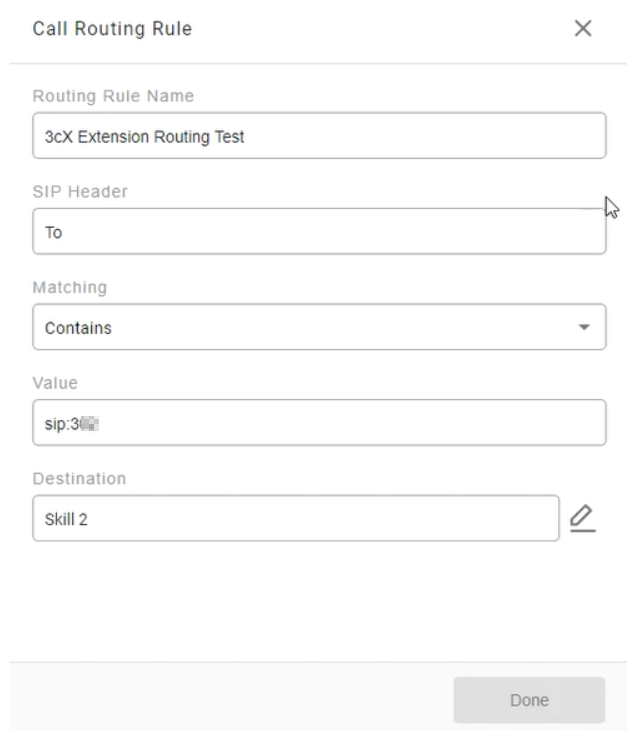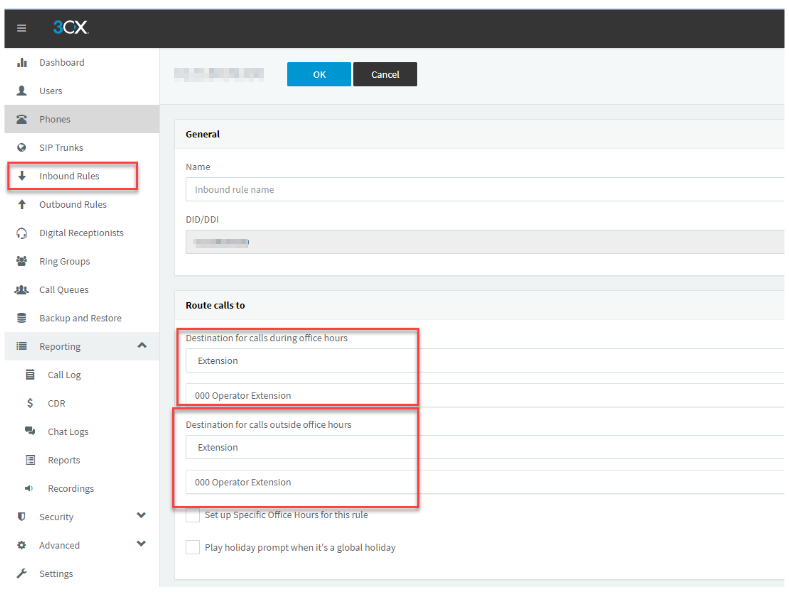WebRTC 3CX Integration
How to integrate WebRTC into the 3CX platform
Registering a SIP Extension
Though it’s true that 3CX can have unlimited calls/line appearances per extension, we did run into some limitations on how to make this viable for our Contact Center.
What doesn't work
- Routing through a RingGroup containing our load balancer
- Routing through a Queue containing our load balancer
What does work
- Routing through a single extension with a twist
- For another example: Think of our load balancer technique used on the ACO / RingCentral platform
- The top extension in bold is considered our Load Balancer
- Any other extension in line are the extensions that will “hold” the calls after hitting the load balancer
 \
\ - NOTE: Ensure these extensions are set to “Accept Multiple Calls”\
 \
\
\
The Twist
- With this deployment, we are going to create a “load balancer”, but only for the purposes of invoking the code
- NO calls should be pointed to the load balancer with this method, think of it as just a placeholder for routing calls
- In this case, you will need to route calls (whether via a DID, or a Digital receptionist) over to the extension directly
- Here is a digital receptionist example\
 \
\
\ - Note that digit press 1 goes to 301 and digit press 2 goes to 302
- This 301 or 302 extension is then passed over to a corresponding skill, example below\
 \
\
\
- This 301 or 302 extension is then passed over to a corresponding skill, example below\
- For more technical SIP traces, this is what we see in the logs\
 \
\
\
- Here is a digital receptionist example\
- To summarize, we are using the “To” header and ANY call that goes to extension 302 will go to that skill
- This gives us a viable solution to route calls to 3CX based upon the extension it comes in on
- Example: Inbound Rules - Select the phone number
- Then, point the route to the extension of your choice\
 \
\
\
- Then, point the route to the extension of your choice\
- Example: Inbound Rules - Select the phone number
Updated about 2 months ago
